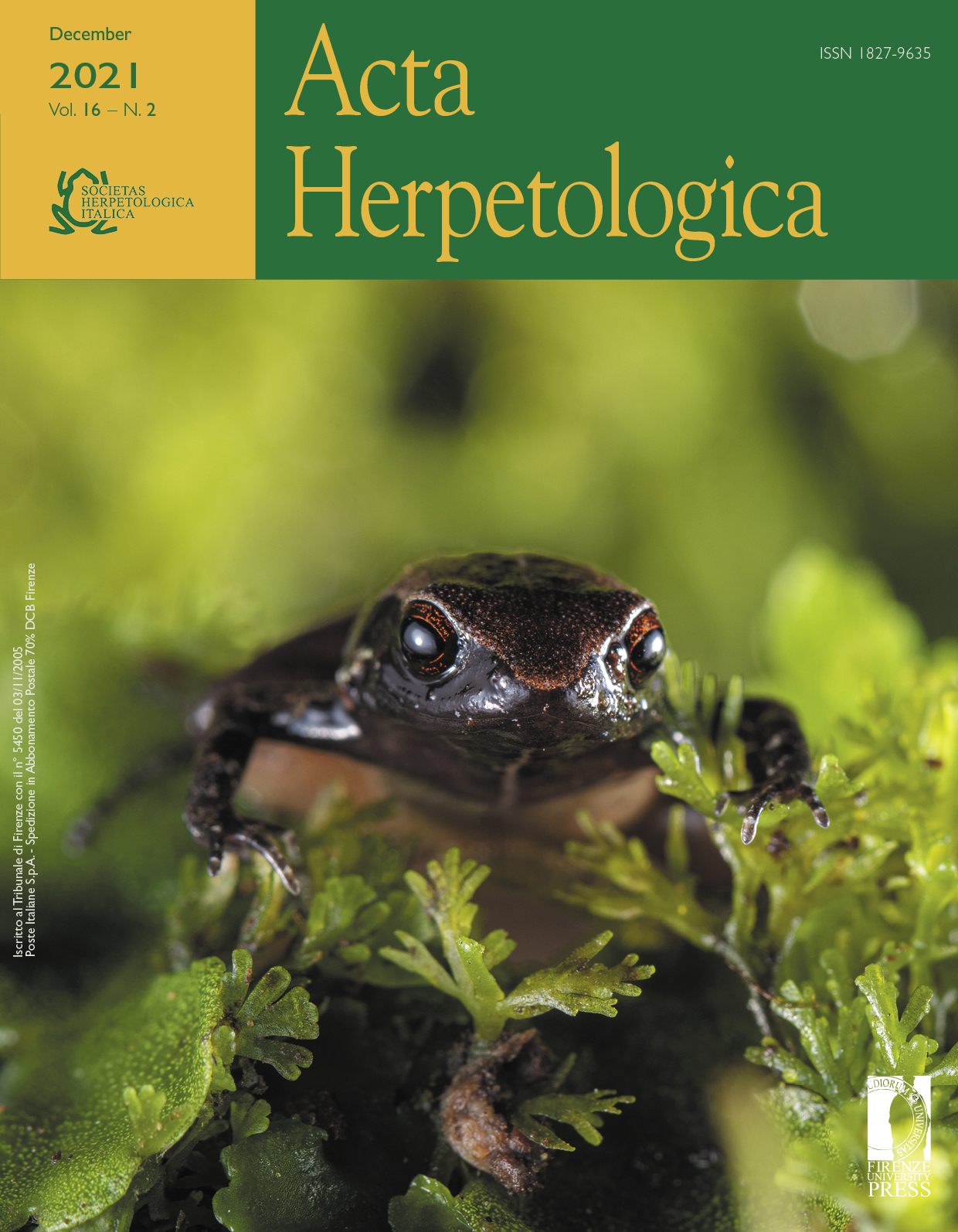Published 2021-09-17
Keywords
- Emys trinacris,
- phenotypic plasticity,
- Cyprinus carpio,
- Gambusia hoolbroki,
- alien fishes impact
How to Cite
Abstract
The introduction of alien fish species in wetland ecosystems could have a great impact on freshwater communities and ecological processes. Despite fish introduction has been noticed as one of the principal cause of freshwater extinctions, ecosystem processes alteration, and change in aquatic community assemblage, very few data about impact on freshwater reptiles are available. As study model we used two neighbour sub-populations of the endangered Sicilian pond turtle, Emys trinacris, inhabiting two small, close each other and very similar lakes, except for the presence of allocthonous fish, Cyprinus carpio and Gambusia hoolbroki in one of the two. The multi-year study allowed highlighting significant differences in abundance, growth and reproductive output between the two freshwater turtle sub-populations, suggesting their influence on phenotypic plasticity of the studied population. These results are discussed in the light of previous evidence about the impact of these alien species on abundance and assemblage of the invertebrate community with an evident impact on niche width, diet composition and therefore energy intake by Emys trinacris. These data may provide important information to address management strategies and conservation actions of small wetland areas inhabited by pond turtles, pointing out a threats never highlighted up to now.






